The Sailing Seasons Around the World (with Map)
Knowing the sailing seasons around the world help you to plan your trip well. I've made a list of sailing conditions around the world, so you know where to go when.
The sailing season dates for popular destinations:
- The Caribbean: midwinter and early summer (December - January or March - June)
- The Mediterranean: April - October, although the winter is fine as well
- Australia: May - October
- UK: throughout the year
- South Pacific: mostly May - October
But there's more to sailing seasons than just a fixed date. You really have to learn to decide on a day-to-day and year-to-year basis what the best time to go is.
In this article, I'll give you the rough timeframe for the most popular destinations, and after that, I'll dive a little deeper into the different things that make up the conditions of a sailing season. Oh, and cyclone season and hurricane season are one and the same thing - read on to learn why.

On this page:
Sailing Seasons for Different Destinations
| Region | Season | Hurricane |
|---|---|---|
| Mediterranean | Apr 1 - Oct 30 | (Aug 1 - Sep 30) |
| Croatia | May 1 - Sep 30 | - |
| UK | May 1 - Aug 30 | - |
| Baltic | May 30 - Sep 1 | - |
| North Atlantic | Nov 15 - Feb 30 | Jun 1 - Nov 30 |
| Caribbean | May 1 - Jul 30 and Nov - Feb | Jul 1 - Nov 30 |
| British Virgin Islands | Apr 15 - Jun 30 and Nov - Feb | Jun 1 - Nov 30 |
| Florida | May 1 - Jul 30 | Jul - Sep |
| Sea of Cortez | Jan - Mar | Aug 1 - Sep 30 |
| San Francisco Bay | Sep - Nov | - |
| Northwest Pacific | May - Oct | Jul - Dec |
| Northeast Pacific | May - Oct | Jun - Oct |
| South Pacific | May - Oct | Nov - Mar |
| French Polynesia | May - Oct | Nov - Mar |
| Australia | May - Oct | Nov 1 - Apr 30 |
| New Zealand | May - Oct | - |
| North Indian | Dec 15 - Feb 28 | Mar - Nov |
| South Indian | Apr 15 - Nov 15 | Nov 15 - Apr 1 |
| Thailand | Nov - Apr | Jun - Oct |
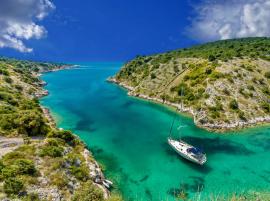
How Long Does it Take to Sail Around the World?
The Mediterranean - The Mediterranean doesn't really have a storm season, although the weather is most unsettled in late summer when the water and land temperature is highest and the air temperatures drop. This causes unsettled weather. I'll go into more detail on the conditions in the Meds below.
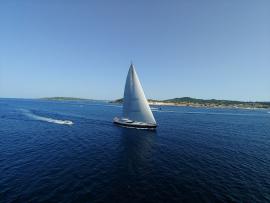
How Long Does it Take to Cross the Mediterranean Sea by Boat?
Croatia - Croatia's sailing season can be limited by the Bora, a North Eastern wind gust coming in from Russia, which can reach hurricane strength. It is strongest in winter. The Bora is a katabatic wind, which means it's a high-pressure wind that comes crashing into the Adriatic Sea through the force of gravity.
United Kingdom - The UK doesn't really have a sailing season, but the racing season runs from Spring - Autumn. But you can sail the coast throughout the year.
Baltic Sea - The Baltic has a short sailing season of 3 months, with extra long days and smooth water. The water, however, is very cold, especially in the first month (June) of the season.
North Atlantic Ocean - The North Atlantic has an active hurricane season running from June to December, with its peak around September. Around January, trade winds are at their best. If you want to know more about the Atlantic crossing, you should definitely read my previous article here. It explains the routes and distance, and the best time to go.
It takes just 2-3 weeks to cross the Atlantic. For a map with the route and some really good tips on how to make use of the trade winds, read my article on the Atlantic crossing here (new tab).
Caribbean - The Caribbean is said to have two seasons: April and November. These are the dryest and hottest months. The peak season is however around Christmas. I'll go into more detail on the conditions in the Caribbean below.

Here's the Best Time to Sail the Caribbean (3 Tips)
British Virgin Islands (BVI) - The calmest period weather-wise is around the winter. The temperatures are moderate, and the winds are moderate. But it will probably rain a little every day - although it's rare to get a full day of rain. This is also peak time, so it's the most crowded and expensive period. Early summer is also a great period since it's a little less crowded and expensive. Temperatures are hot, with light air (less wind than in winter).
Florida - Thunderstorms with heavy winds in the hurricane season. In the summer, nice, moderate winds (5 - 10 knots) with hot and humid weather. A lot of (very big) mosquitoes on the eastern shore locations.
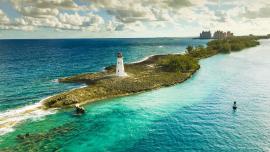
The Best Time of Year to Boat from Florida to Bahamas
Sea of Cortez - The Sea of Cortez sailing season is roughly from November till April, but the peak season is from January to March. Summer, from July - September, is very warm in this area, resulting in storm season at the end of summer.
San Francisco Bay - The sailing weather for the San Francisco Bay area is best around autumn. The weather is clean, with light, predictable winds. Spring is also nice, with good temperatures and visibility. The summer can provide choppy waters, with bad visibility. Fog clouds spread over the bay area, and the winds get unpredictable. There isn't a real storm season here, but there can be an occasional thunderstorm.
For tips on how to sail from California to Hawaii, read my Sailing Guide: California to Hawaii here (new tab).
Northeast Pacific - The Northeast Pacific is the stretch of ocean between Mexico and Hawaii. One of the most active areas in the hurricane season worldwide. Avoid between June - October.
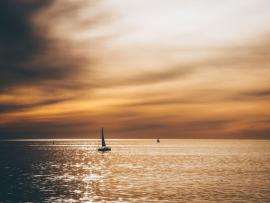
What's the Best Time to Sail Across the Pacific?
Northwest Pacific - The waters surrounding Guam are more likely to be hit by storms from July - December. The Northwest Pacific has a lot of tropical storms, so I recommend to avoid these waters in the hurricane season.
South Pacific - Best time to sail in the South Pacific is from May - October when there are little storms and the weather is settled.
French Polynesia - Full cyclones rarely hit the islands of French Polynesia. The South Pacific doesn't have many strong cyclones.
Australia - The waters North of Australia are prone to cyclones in the season (November - March), from 12 - 25 degrees. There aren't many cyclones outside this area, and if there are, they are almost always well predicted. The waters South of Australia are almost entirely cyclone-free.

Sailing from Australia to New Zealand (time, route, tips)
New Zealand - Practically hurricane-free.
North Indian Ocean - This ocean doesn't have an official cyclone season, but most storms do form between May and November. 2018 was the most active season since 1992, with 7 cyclonic storms. The best sailing time is during the North East monsoon when the weather is cooler and settled, and the winds are lighter and more predictable.
South Indian Ocean - The most cyclones in the South Indian Ocean usually occur between December - March, but this region is notorious for cyclones outside the season.
Thailand - Thailand has two seasons and no real hurricane season: the dry season (North East monsoon), which runs from May - September, and the wet season (South West monsoon), which runs from October - April. In the dry season, winds are usually stable, come from the Northeast and blow at force 2 - 4. The weather is dry and hot, with an average temperature of 30° C or 85° F. During the South West monsoon, the winds are a bit stronger (roughly 7-8 knots), making for more challenging sailing. Although Thailand doesn't have an official hurricane season, the change of storms increases in the monsoon season (South West monsoon).
Planning a long cruise? I've compiled a list of the most common changes and essentials for ocean passages. Make sure to read my 41 Sailboat Cruising Essentials for Long Trips here (new tab).
Why Does the Season Matter?
You can absolutely sail outside the season, but taking the hurricane season into account will make your sailing experience just generally better. Everything gets easier. You are much less likely to encounter critical situations. Planning your trip according to the seasons will make your trip safer and more comfortable.
So I recommend not sailing outside the season, unless you know what you're doing - and are experienced as a sailor and in weather forecasting.
Details on the Caribbean Season
- General sailing season: Early summer - May 1 - July 30
- Peak season: Last week of December - First week of January
- Temperatures are mild, weather is a bit unsettled, 25-knot winds not uncommon
- Hurricane season: August - September
Best time to go
Although most people will say that the best season to visit the Caribbean is winter, I disagree. Many sailors say that early summer is a great period in the Caribbean. Also, the threat of tropical storms is very much overrated and gets overhyped by the media. Anchorages at the leeward side of the island tend to be pretty well-protected.
May to Late July seems to be a great period to sail the Caribbean. The winds are calmer, the seas smoother, and although the masses like to go to the Caribbean the week after Christmas / before New Year's Eve, it's not the best period. Wind's are known to blow 25 knots throughout the winter period, which is great fun for a day or two, but I can imagine it gets uncomfortable at anchorage pretty quickly.
It's just the best place to be for winter, compared to other sailing regions - but the Caribbean waters are better in early summer, so in my mind, that's the real sailing season.
Details on the Mediterranean Season
- General sailing season: Late May - Early October
- Hurricane season: Aug - Sep
- Peak season: Mid July - Late August
The peak season is very busy in the Meds, although there's plenty of places to go and avoid the crowds. It's also the hottest: temperatures may rise to over 35 degrees Celcius (or 95 degrees Fahrenheit). The European West Meds and Adriatic become expensive and very crowded.
The sailing season is a couple of weeks shorter for northern regions. So the northern sailing season runs from Mid April - Mid September:
- France Riviera
- Northern Ionian Sea
- Adriatic Sea
Best time to go
Like in the Caribbean, the peak season of sailing is actually not the best time to be there. I'm not really sure why everybody gets over there in a frenzy in a six-week period. It's so crowded and very expensive. The weather is so hot it's sometimes uncomfortable. I remember one particular summer in early August when I was in Italy; mid-day, temperatures almost reached 40 degrees Celcius (or 104 degrees Fahrenheit). It was insanely hot. An Italian friend kept telling me it was the worst time of year.
Locals all seemed to agree that spring was the best time to be in and around Italy. I agree. The temperatures are mild, really comfortable. True, the waters can be quite cold then, so maybe wait until early summer to go swimming and the like.
Late spring and early summer have a couple of advantages:
- not very crowded
- actual berths available
- a lot of places are less expensive, especially the Italian, and Croatian coast and Greece
- fresh fruit available everywhere
- mild temperatures and good weather
Medicanes
Mediterranean hurricanes are often smaller than full-fledged hurricanes, because the water temperature is a lot cooler throughout the year, making the difference in air temperature and water temperature smaller.
Med. Hurricane's are sometimes called Medicanes. On average, they are about half the size of hurricanes. They create wind speeds of up to 40 - 80 mph (in comparison, a hurricane can easily reach up to 75+ mph.)
They are subtropical storms and not hurricane strength, although they sometimes do reach hurricane strength.
The hotspots for hurricane's in the Meds are the Western Med between Spain and Sardinia and Corsica, and the Ionian Sea, south-east of Malta.
Understanding Sailing Seasons
Before you plan any trip, it's important to have a basic understanding of the sailing seasons. Luckily it isn't rocket science and if you understand some basic concepts, it gets way easier to understand weather patterns.
The sailing seasons are usually pretty reliable and don't vary a lot. Knowing the averages gives you a rough estimation and guideline for trip planning. But sometimes even these averages are way off base. The start date of the hurricane season differs every year. For example, in 1938 the North-Atlantic hurricane season started on January 3 instead of June 1.
So it's important to know your stuff and always check the forecasts. You have to be able to determine the season yourself and to do this you need to understand the different factors that make up the sailing season. Every sailor should be able to determine himself/herself when the best time to go is.
So let's dive deeper into what makes up the sailing season and how to call it.
What's a Sailing Season?
So what exactly is a sailing season? A sailing season is a timeframe in which a certain sea is known to have the best possible conditions for sailing. In this period the water is calm, the winds are reliable, the temperatures are good, and the weather forecast is reliable. The weather is settled - and big surprises are unlikely.
There are several things that decide when the sailing season is. The most important is the number storms you can expect.
Factors that determine the sailing season:
- Winds and storms
- Temperatures
- Reliability of weather forecast in certain periods
If all of these conditions are good, you're good to go. If the weather forecast isn't reliable, it's probably not a great idea to go far out. The Meds are known for unreliable forecasts. This doesn't mean the authorities are not competent, but when the weather in the Meds is unsettled, it can simply change very rapidly. Knowing this helps you to take down a reef or find safe harbor in time.
Here's a map of the sailing seasons per region:
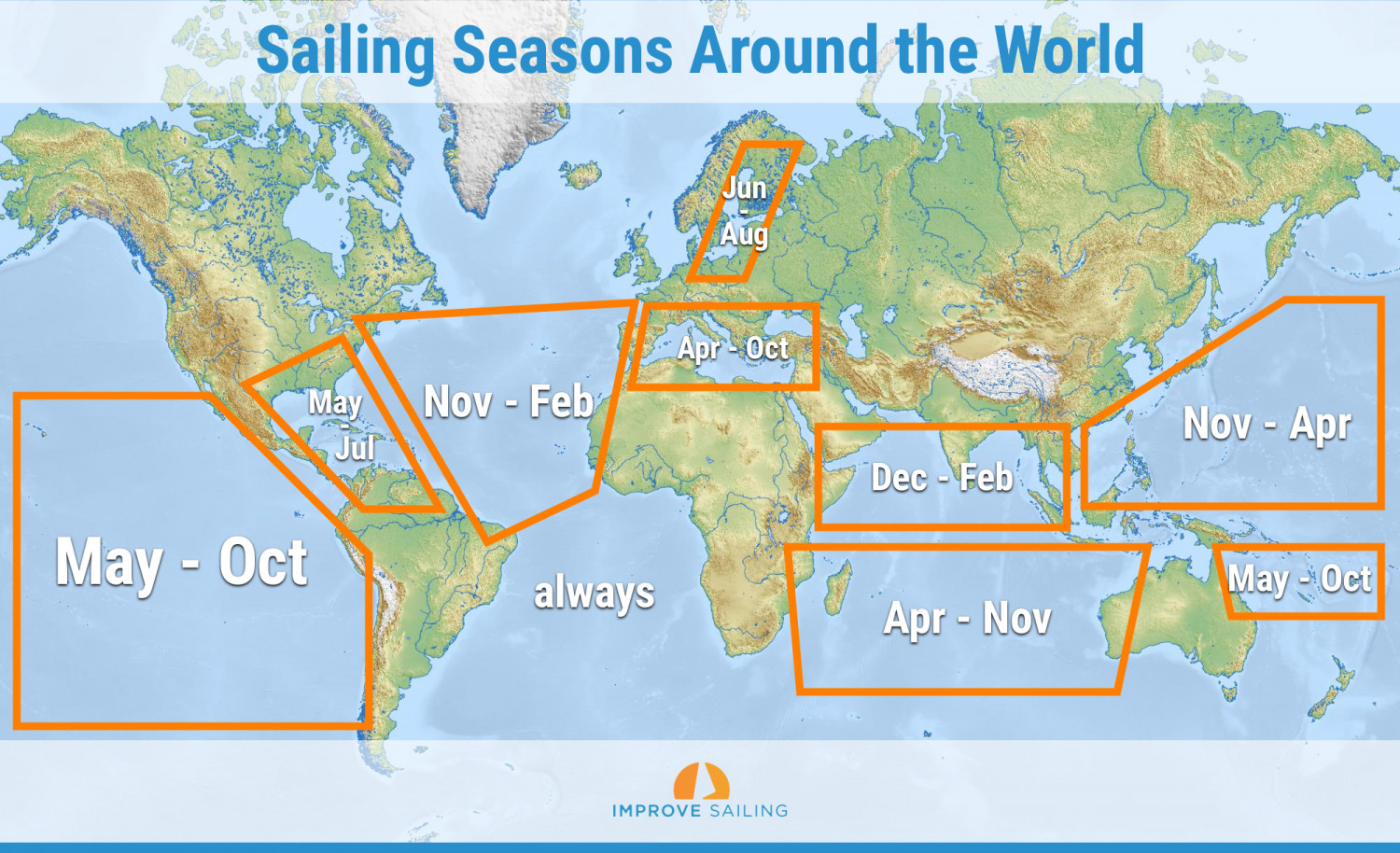
Hurricane's and Cyclones
How do hurricanes form? Hurricanes form when the temperature difference of water between the poles and the equator is at its highest, which is in the summer. They form around the equator, where this difference is the largest. The term hurricane is only used in the Northern Atlantic and Eastern Pacific. The scientific term is a 'tropical cyclone'.
Hurricane season is (roughly speaking):
- July - October in the northern hemisphere
- December - April in the southern hemisphere
The hurricane season simply is the period where the worst and most storms will occur.
But this doesn't mean that there are no major storms outside the season. You should always be aware of weather forecasts, even in the hurricane low season.
Here's a map of the hurricanes between 1985–2005:
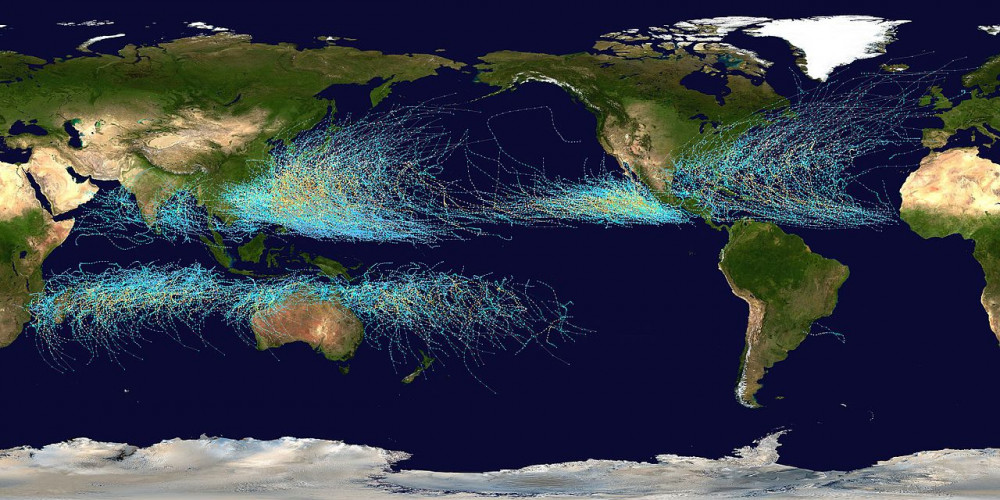
Trade Winds
If you want to understand sailing seasons, it's super important to understand a little bit about how wind works. Especially with bluewater sailing, the wind is one of the most important factors that dictate when and where you'll be able to go.
The trade winds are created by the rising hot air around the equator, which then moves towards the poles, cools off, and comes down again. This permanent circulation of air creates steady and reliable winds which are called the trade winds. Near the poles, these winds are generally westerly (they blow from the west) and near the equator, they are generally easterly (they blows from the east).
Here's a map of the trade winds:

Knowing these wind directions will help you to plan ocean passages more effectively.
Related Questions
How long does it take to sail across Pacific? It takes between 30 - 40 days to cross the Pacific, depending on your port of departure and arrival. It's about 4,000 nautical miles, which is roughly twice as long as the Atlantic crossing. The Pacific crossing is one of the longest ocean crossings possible.
What's the difference between a cyclone and a hurricane? The difference between a cyclone and a hurricane is the location of the storm. Hurricanes' are tropical storms that occur in the Northern hemisphere, while 'cyclones' occur in the southern hemisphere. In the Northwestern Pacific, the term typhoon is also used.
Did you find the answer to your specific question?
👍 42 👎 4
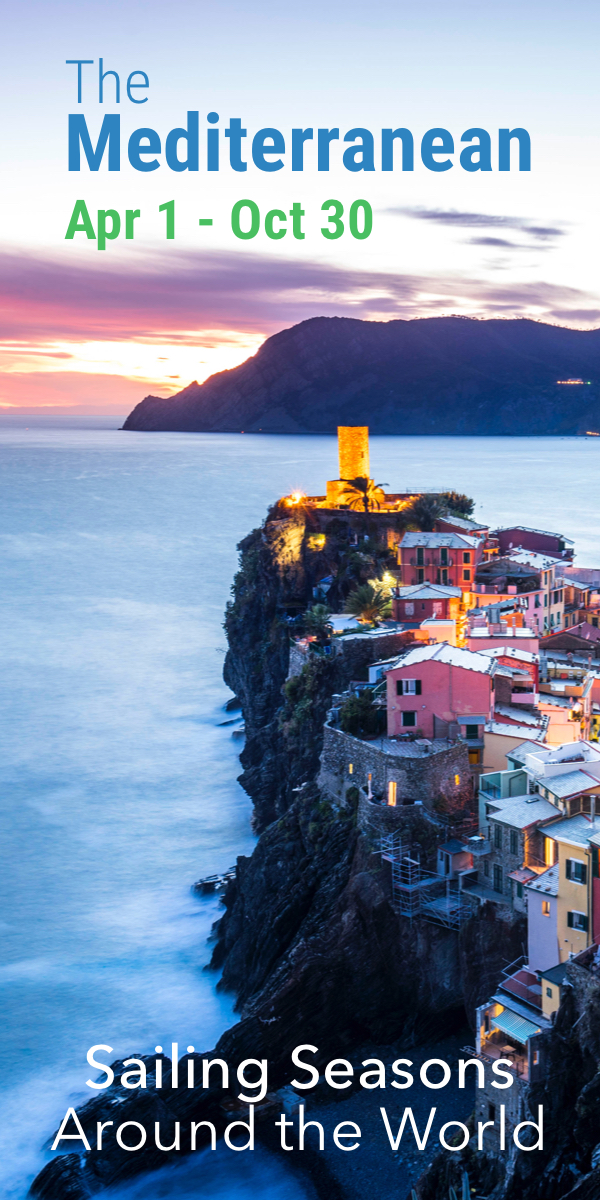
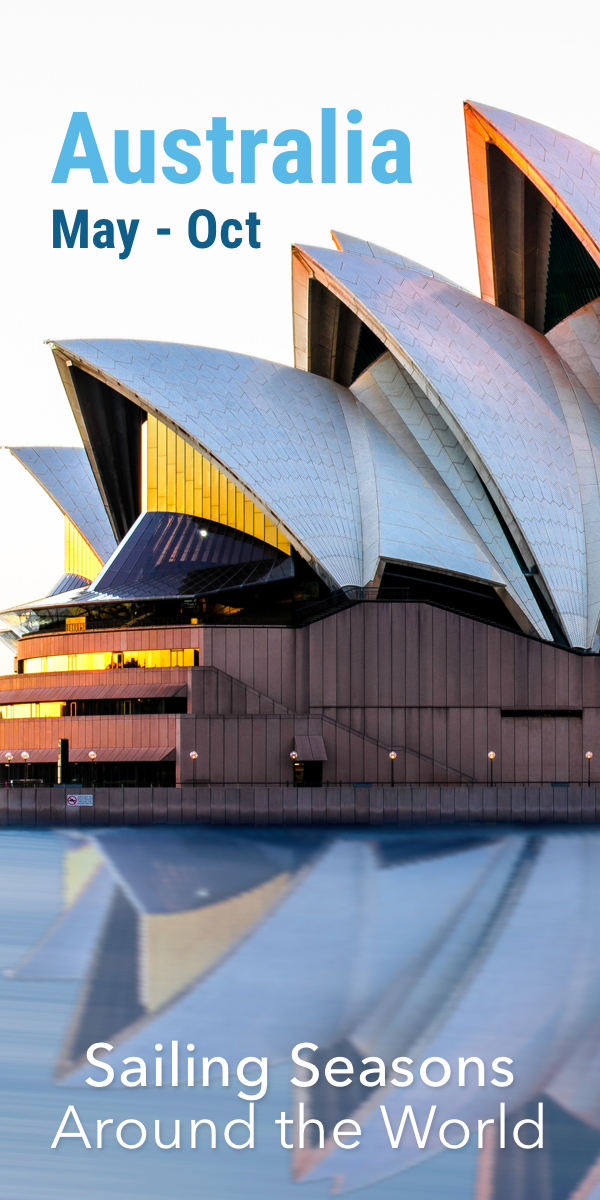
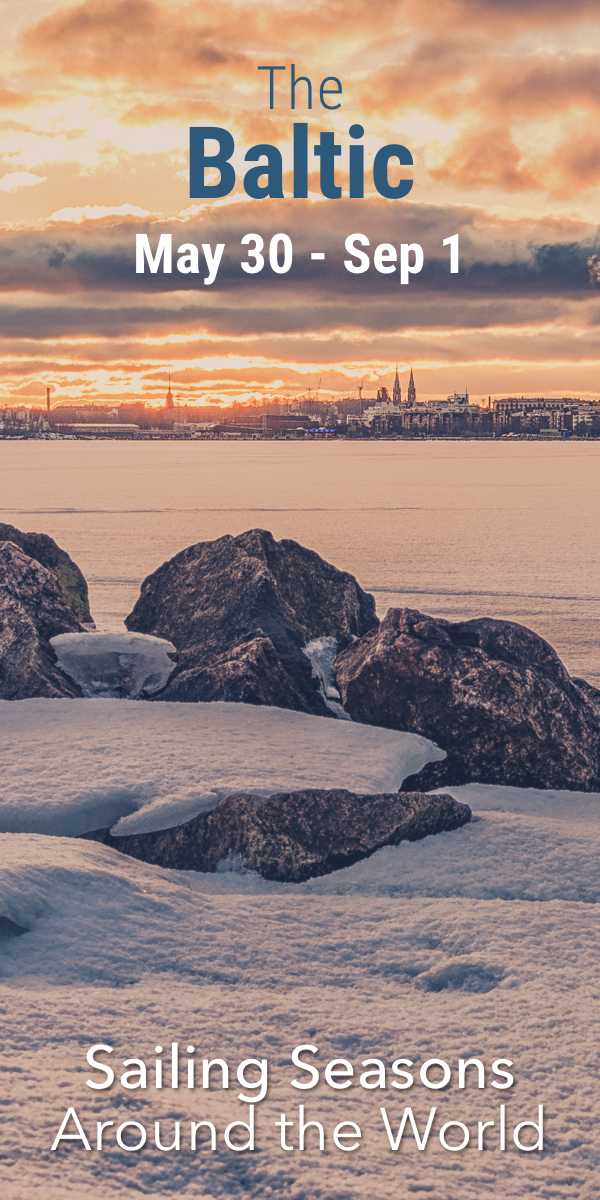
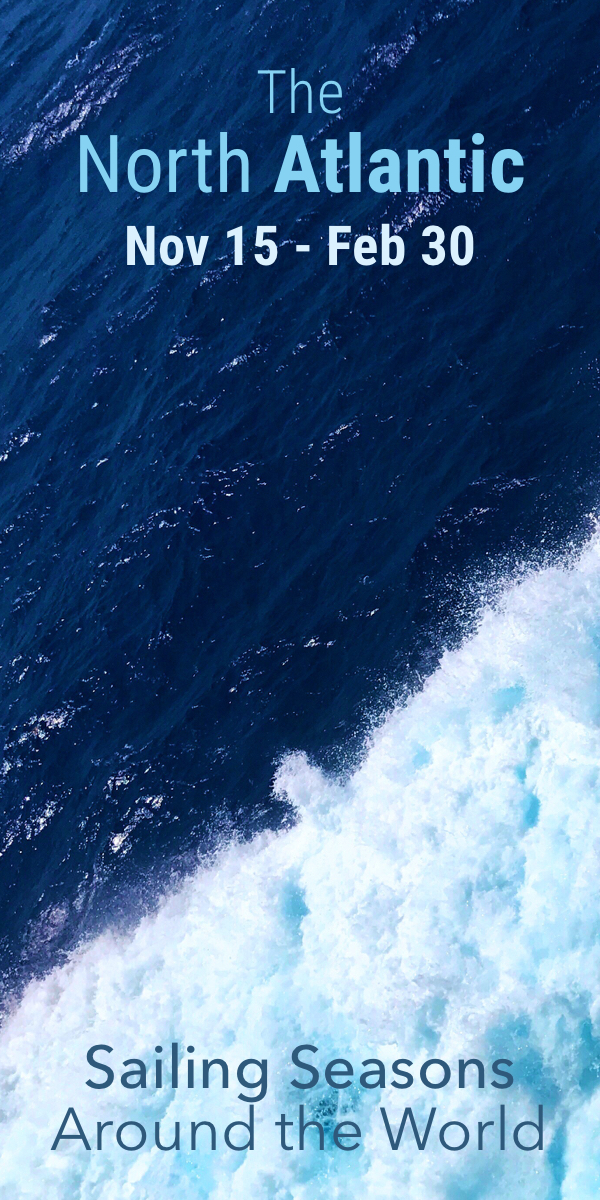
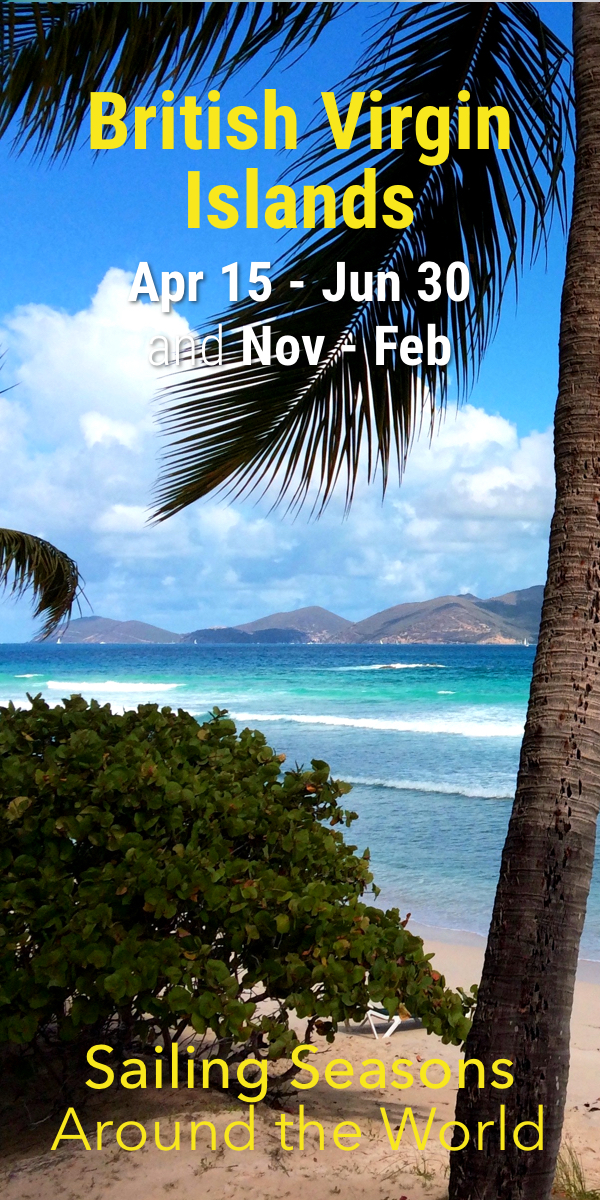
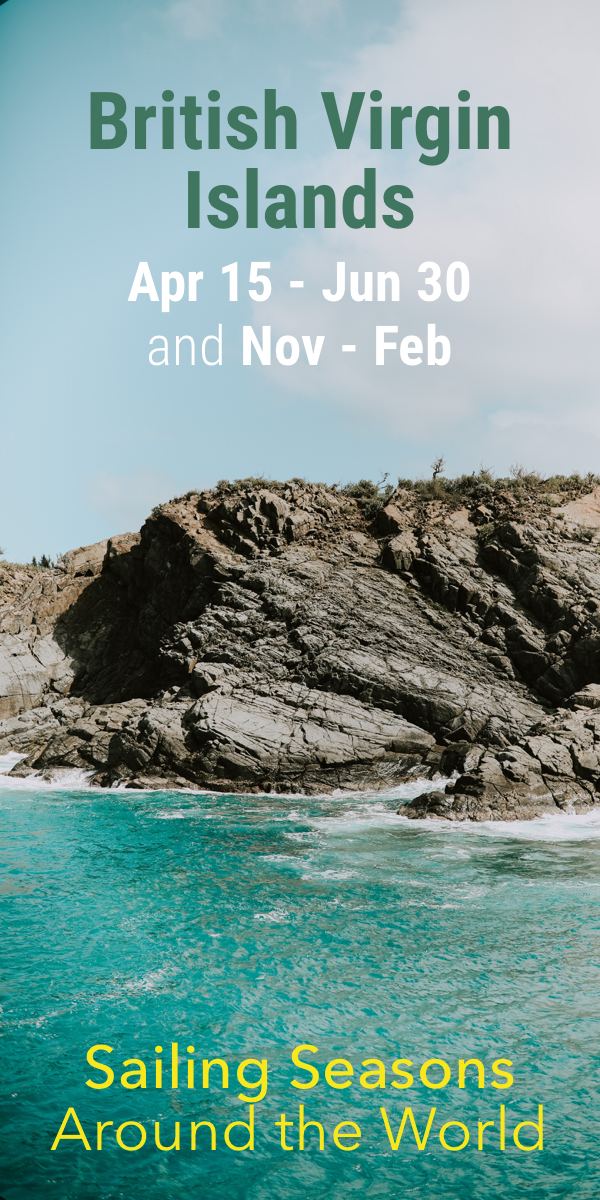
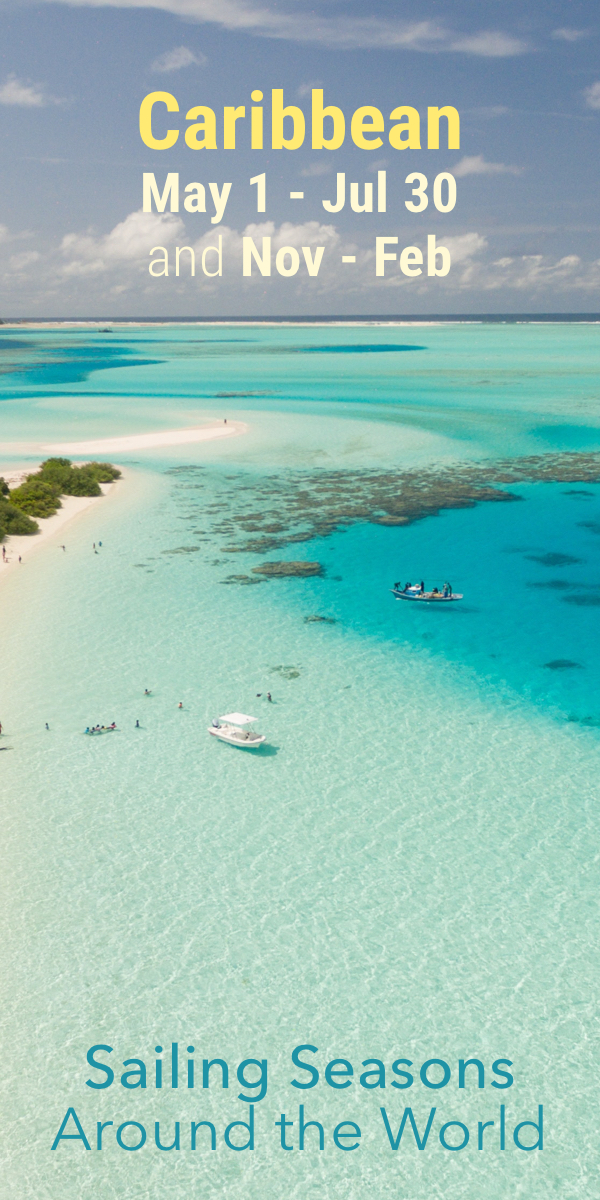
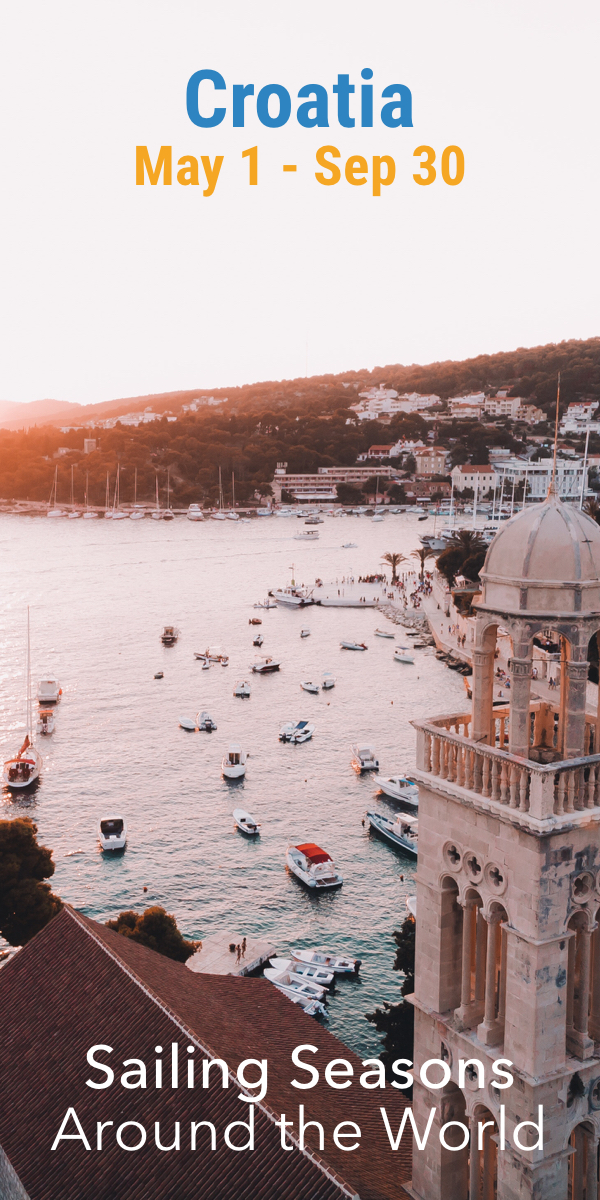
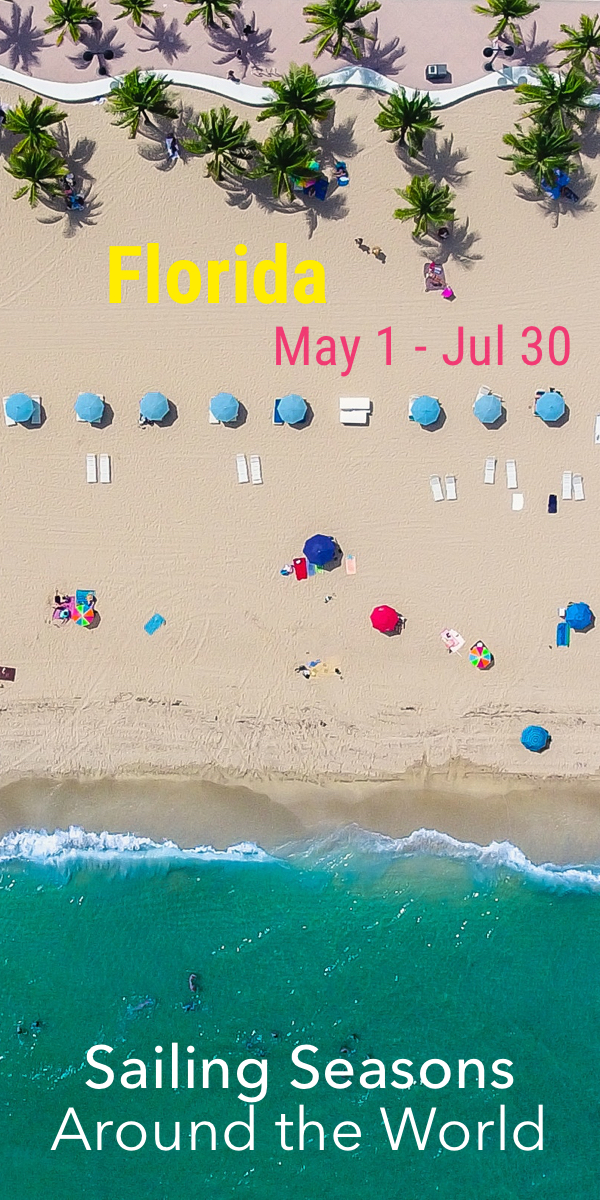
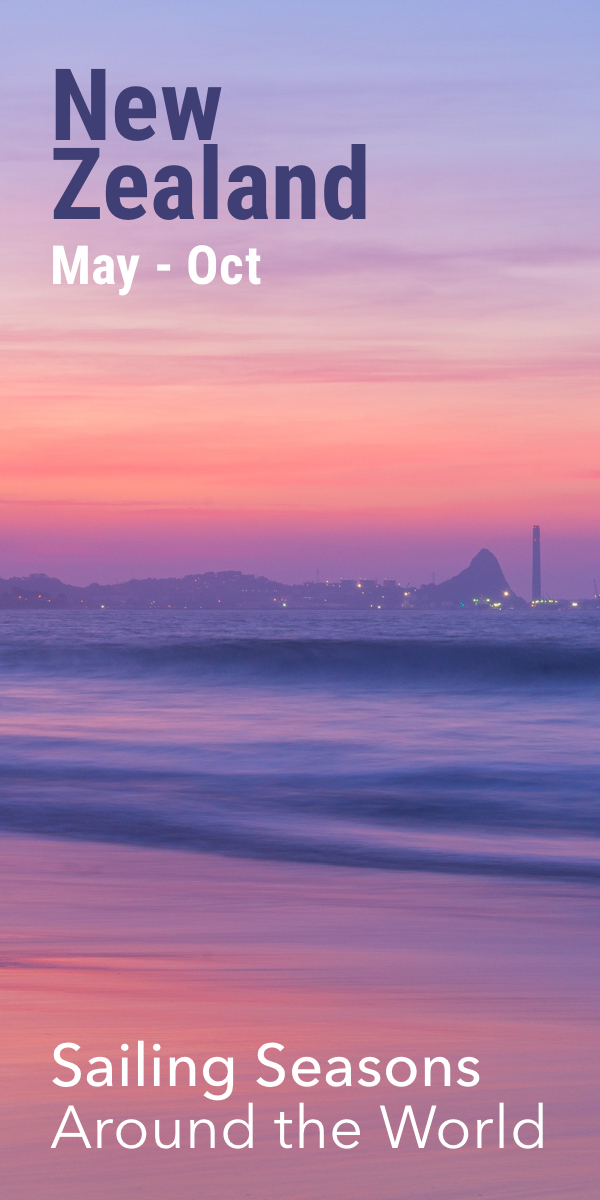
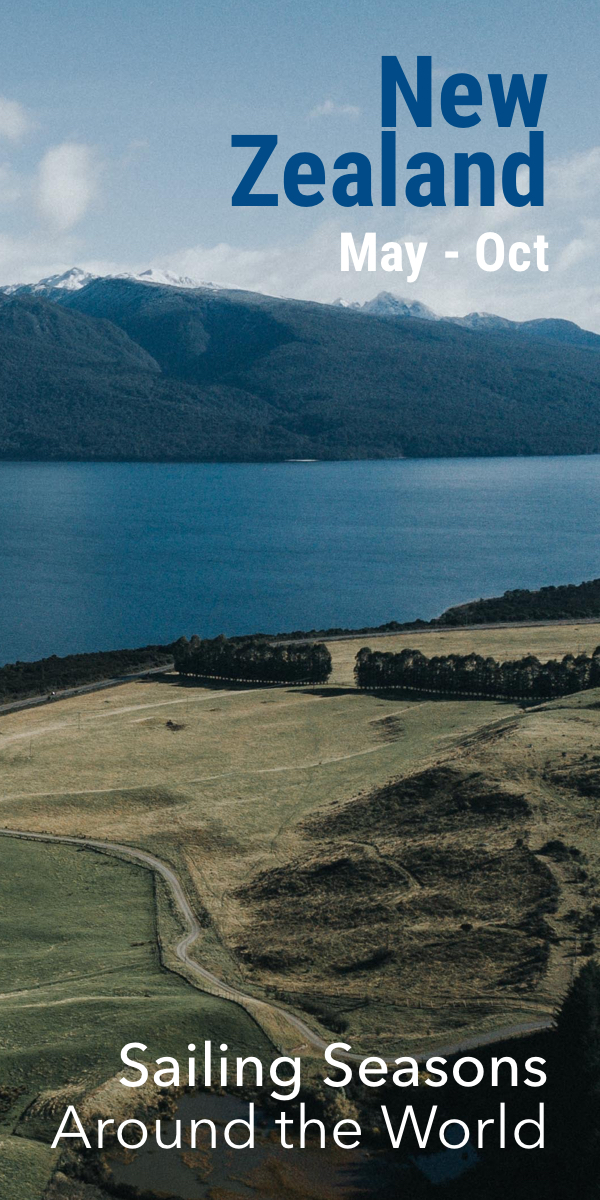
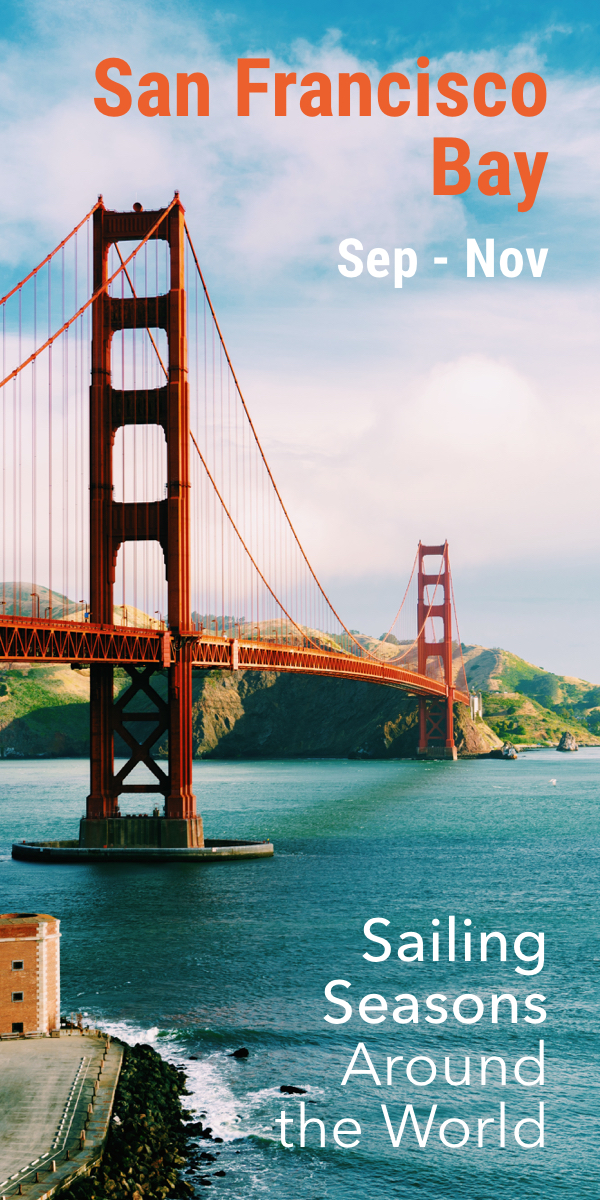
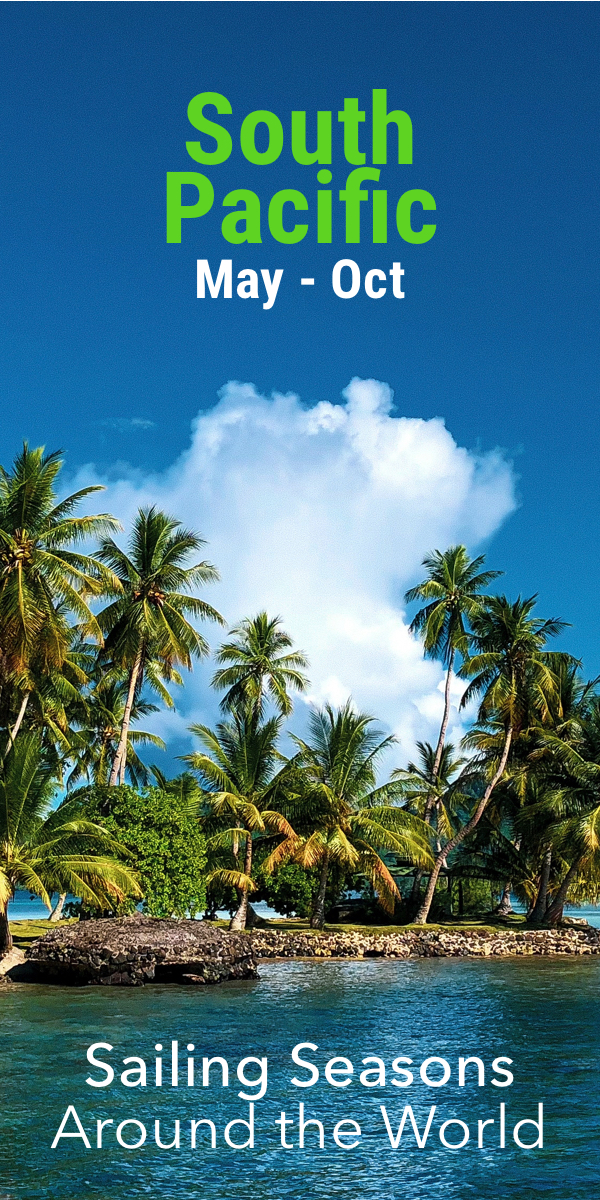
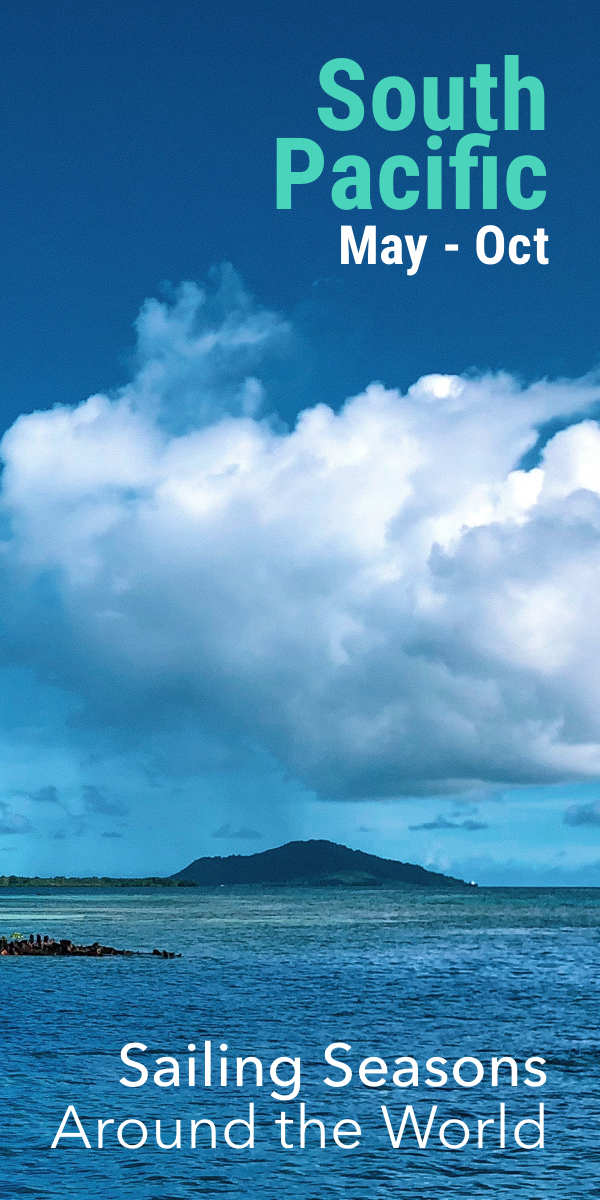
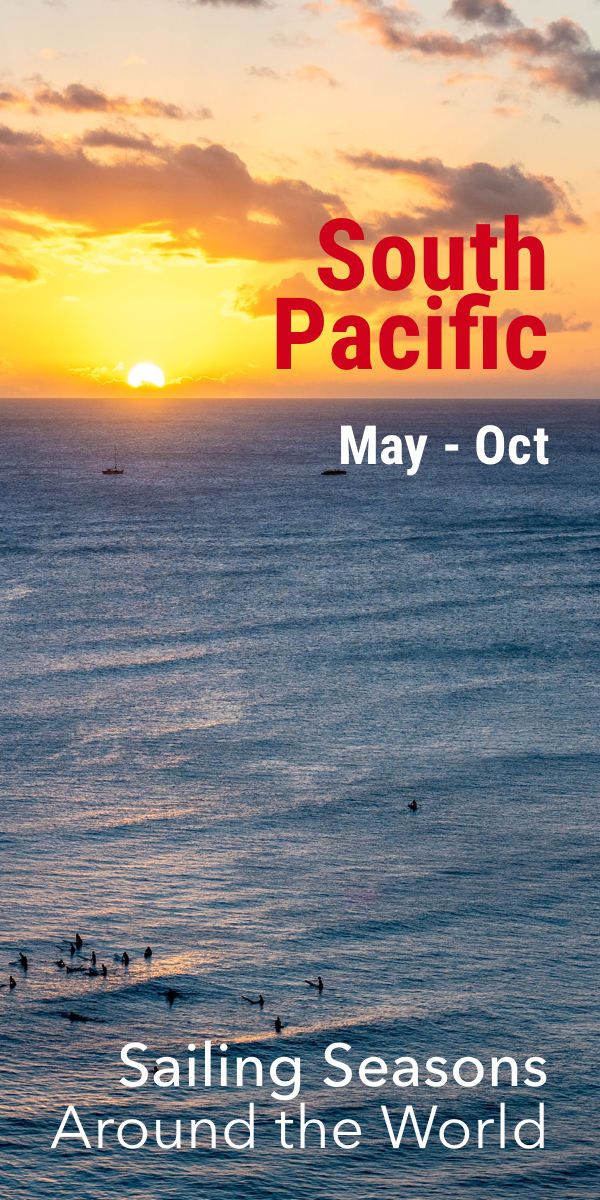
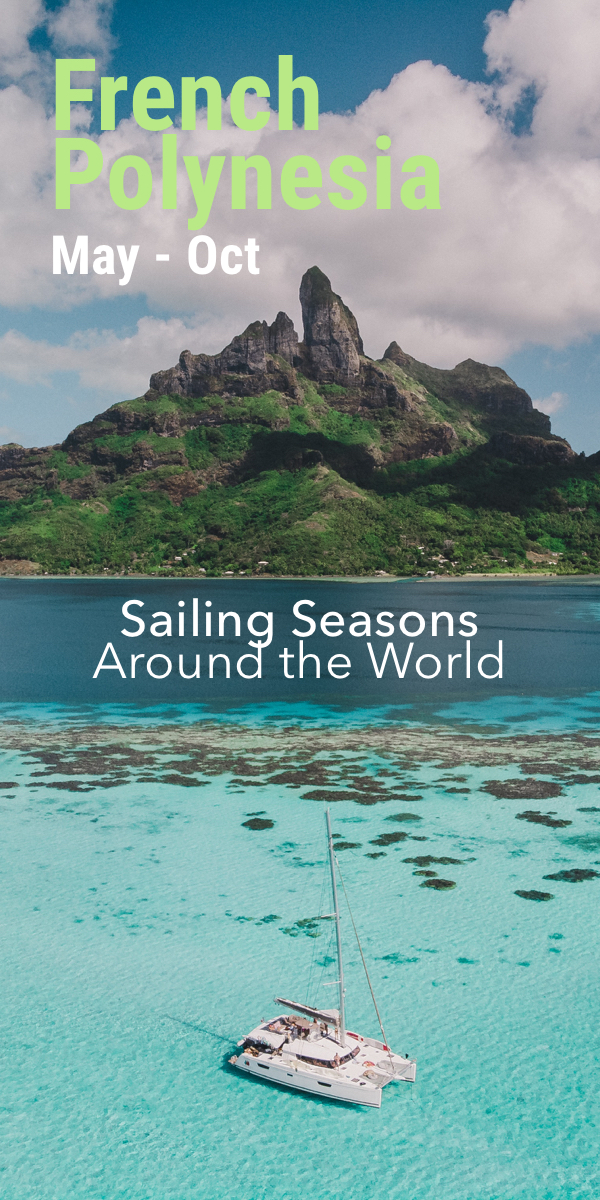
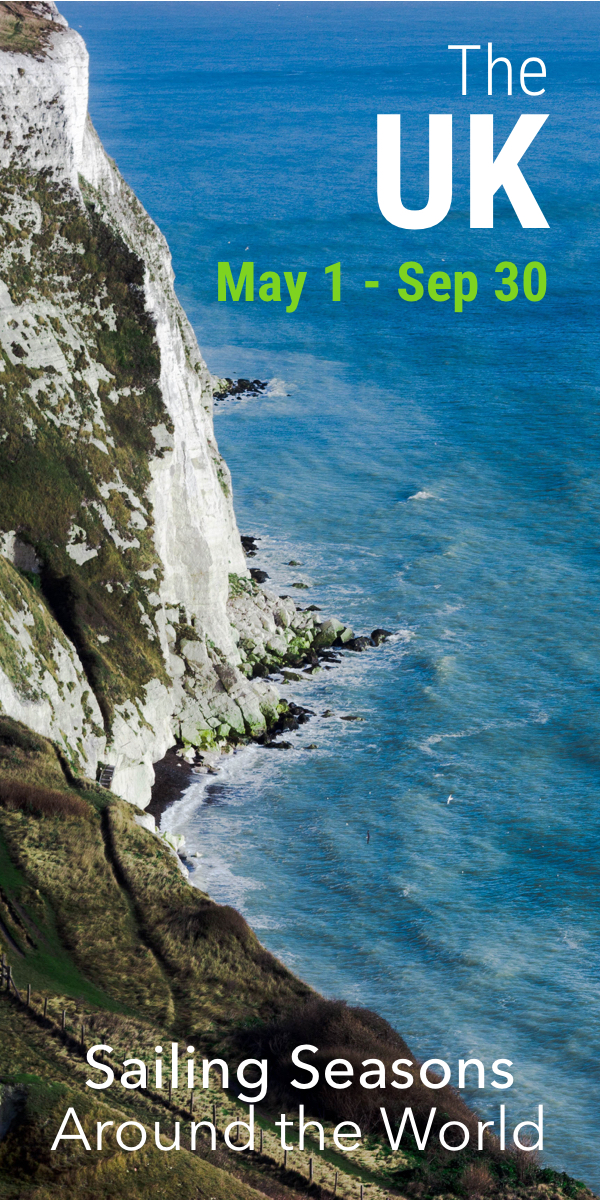
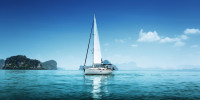
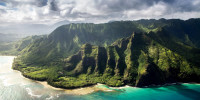
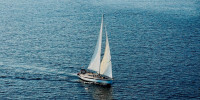
Comments
Perry
hmm, you need to improve your wording and your limitations on the Australian east coast. Its not ‘south of’ or ‘north of’ Australia.
In the North of Australia, 12 to 25 degrees would cover it. Cyclones have been known outside this zone, but they are both rare and well predicted.
Shawn
Hi Perry,
Thanks so much for your corrections. It’s always great to get first-hand information from somebody on the ground.
I’ve updated the article to reflect your suggestions.
Take care,
Shawn
S/v Silkap
Hi Shawn,
interesting articles. On Canary Islands in the Atlantic, one can sail the whole year. The weather is always good, good wind, no humidity, no rain, no cyclones. As the wind comes mostly from NE, it just isn’t always easy to sail back from the westerly islands to the easterly ones. We’ve already spent here 9 months before sailing to Cabo Verde.
s/v Silkap
www.svsilkap.com
Shawn Buckles
Thanks for the info. Sounds like a nice trip! - Tenerife is one of my favorite places on Earth - I’ve spent two weeks there a couple of years ago. (Your website looks good BTW).
s/v Silkap
Yeah, Tenerife is special with its highest mountain of Spain. We hope one day (very soon) you can travel full time. There are so many young people sailing around the world, so you have no excuses ;-)
Francisco J Ballesteros Corrales
Do you have an itinerary recomendation from Sea of Cortez to Japan. Season, route? I find info to Hawaii, but not much beyond, i dont know if there is a risk or restriction i do not know about. Great site!
Francisco J Ballesteros Corrales
Hi Shawn
I am having issues reconciling the season/hurricanes between the table and the map for the northpacific.
Cheers
eliot hall
very informational. thanks.
hartelijk bedanktell
mandalay
I have to move my boat (sailboat 65’) from Los Angeles to North Carolina in 2021. I like to obtain all the information possible for a safe trip. This includes seasonal weather windows, areas and ports to avoid, areas and ports to favor, Best routes after Panama to Florida, yelling inside (ICW) or outside north of the East Coast, etc.
Are there any books, publications recommended to consult?
Leave a comment